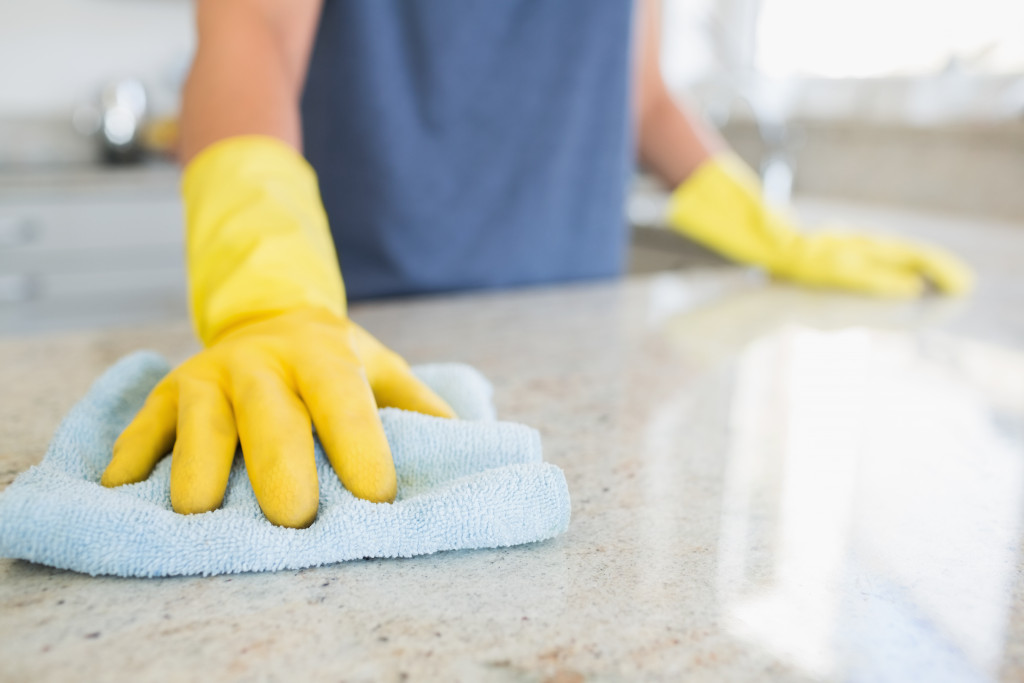Watery eyes, scratchy throat, and stuffy nose — having allergies is one of the worst feelings you’ll ever get. Whether you’re outdoors or indoors, you are never spared from the risk of allergies caused by dust, mold, pollen, and dander.
Keeping the window close is not enough to keep allergens piling up inside the house, especially if your living space is a home for air pollutants. That is why more people turn to professional carpet cleaning services to save themselves from potential triggers.
Whether we like it or not, allergy sufferers should make housecleaning a part of their allergy management plans. This will reduce the number of allergens and reduce allergy sources. To help you, we listed down cleaning tips for those with indoor allergies. Follow these steps to reduce the risk of common allergy triggers while keeping your home in good shape.
Bedroom
Since we spend most of our time locked in our bedrooms, it’s important to clean all the dust-catching surfaces weekly. But before you start, make sure to wear a dust mask to avoid breathing in the allergens in the air and use natural cleaning supplies to avoid chemical inhalation.
Start with the bedding by removing the sheets, blankets, and pillowcases. Make sure to have extra replacements since you’ll be doing this once a week. Choose washable comforters and bedspreads and encase box springs, mattresses, and pillows in dust mite-proof cases. If you have allergies, choose the right bedding since they’re the biggest source of irritants, such as dust and dander.
Wash the used sheets using hot water at least 134°F/54°C to kill allergens. After washing, don’t hang the beddings outside because letting them dry outdoors will let outdoor pollens sticking in the sheets. Wash pillowcases and sheets weekly, duvet covers and comforters monthly, and pillows once every three months. For the mattress, make sure to deep-clean it twice a year.
When cleaning the bedroom, start at the top and work down. Do it weekly to avoid the accumulation of dust. Dust light fixtures and ceiling fans. If you have horizontal blinds, consider replacing them with washable roller shades.
Use a vacuum cleaner with dust attachment to clean upholstered furniture. Wash the drapes and curtains every three months and dust them, especially if there are pets around. Don’t forget the floor and space underneath the bed. Replace wall-to-wall carpeting with hardwood or tile flooring and washable area rugs.
Living room
Just like the bedroom, our living area is another spot where often hang out. That said, it makes sense to put the same amount of attention to it during house cleaning. This means you need to conduct a wall-to-wall vacuuming every week, especially if you allow food and pets in the living area.
Start with the ceiling so you clean the allergens and dust on the floor with a vacuum or damp mop. Dust the walls, light fixtures, and ceiling fans using an extension duster or a vacuum cleaner. Use a damp microfiber cloth when cleaning tabletops and hard furniture. Make sure to include seating surfaces and high-traffic areas to remove dander and dust.
Also, avoid adding live plants in the living area or any part of the house. Plants are another major source of allergies so you want to avoid them altogether. You can opt for fake plants only if you clean them regularly. But if you really want to add real plants, make sure to wipe the leaves every month and avoid overwatering to prevent the formation of mildew and mold.

Kitchen
The kitchen is a prime source for insect droppings and mold growth. To prevent this, install a vented exhaust fan to minimize moisture and check the sink, freezer, and refrigerator for leaks. If any of the appliances or fixtures need fixing, call a service provider. A great tip is to conduct regular maintenance checks to prevent repair issues in the long run.
When cooking, run the exhaust fan to eliminate moisture and fumes hanging in the air. Wash the filter every month to keep them in better condition. Rubber gaskets also deserve some attention, which you’ll find on the dishwasher, fridge, and garbage disposal. Be sure to clean them every month to avoid mold formation.
Save yourself some time by laying wax paper on the cabinet tops. This will make it easier to remove collected dust. More importantly, replace open trashcans with lidded ones to avoid attracting pests.
Taking a few basic steps to keep allergens to a minimum can go a long way in minimizing your allergy symptoms. Arm yourself with the suggestions above, and you’ll find yourself breathing better inside your home. But if you’re still suffering from allergy symptoms, consult a specialist for convenient treatment options.


